Animals that start with L include insects such as lacewings, leafcutter ants and locusts; mammals such as leopards, lions, lemurs and lemmings; reptiles such as the leatherback and loggerhead sea turtles; and birds such as the lammergeier and lapwing.
On this page is a list including these and many other animals beginning with L, with pictures and interesting facts on each species.
Below each animal you’ll find links that you can follow for further information, pictures and videos.
Included in this list are individual species (e.g., the leopard seal) and groups of animals (e.g., lizards) whose names begin with L.
The scientific name and conservation status are provided for each of the individual species.
Index

Scroll down to see pictures and facts on all of the animals, or use the index below to go directly to a particular animal.
List Of Animals Beginning With L
- Labradoodle
- Labrador Retriever
- Lacewing
- Ladybug / Ladybird
- Lammergeier
- Lapwing
- Leafcutter Ant
- Leatherback Sea Turtle
- Leech
- Lemming
- Lemur
- Leopard
- Leopard Cat
- Leopard Frog
- Leopard Seal
- Leopard Tortoise
- Liger
- Limpet
- Lion
- Lionfish
- Lizard
- Llama
- Lobster
- Locust
- Loggerhead Sea Turtle
- Long-Eared Owl
- Longhorn Cowfish
- Longnose Gar
- Long-Tailed Tit / Long-Tailed Bushtit
- Loris
- Lungfish
- Lynx
- Lyrebird
You can find animals beginning with other letters by clicking on the squares below…



























Labradoodle

- Scientific name: Canis lupus familiaris / Canis familiaris
- Type of animal: Mammal
- Family: Canidae (dogs)
- Origin: Australia
The labradoodle is a popular breed of dog that was first bred in Australia in the 1980s. As its name suggests, a labradoodle is a cross between a Labrador retriever and a poodle.
Intelligent and relatively easy to train, the labradoodle is often used as a service dog or therapy dog. It is also a popular breed with families, being companiable and having hypoallergenic properties.
Labradoodles may be either black, brown, cream, apricot, or red. The texture of their coats ranges from straight to curly.
Discover More With Active Wild
You can find out more about dogs on this page: Dog Facts
Discover every species in the dog family on this page: Dog Species List with Pictures & Facts
Labrador Retriever

- Scientific name: Canis lupus familiaris / Canis familiaris
- Type of animal: Mammal
- Family: Canidae (dogs)
- Origin: England
The Labrador retriever, also known as a “Labrador” or “lab”, is a British dog breed. Medium-large dogs, Labradors are known for their good temperament and intelligence, making them both good family dogs and good working dogs. Labradors are used as guide dogs and gun dogs.
The ancestors of the Labrador were “fishing dogs” from Labrador, which is now part of the Canadian province Newfoundland and Labrador. Fishing dogs accompanied their fisherman owners, diving into the water to retrieve nets and lines.
Discover More With Active Wild
You can find out more about dogs on this page: Dog Facts
Discover every species in the dog family on this page: Dog Species List with Pictures & Facts
Lacewing
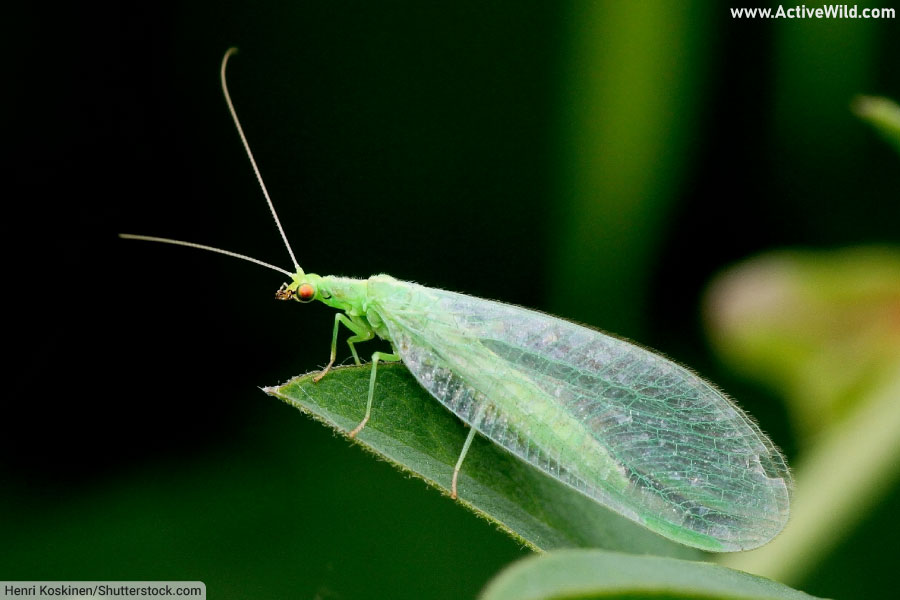
- Type of animal: Insect
- Order: Neuroptera
Lacewings are insects with two pairs of delicate, veined, lace-like wings.
Among the best-known lacewings are insects belonging to the family Chrysopidae, which contains 1,486 species (source). Lacewings in this family are known as green lacewings. They are also known as “stinkflies”, due to their ability to release a foul-smelling chemical from glands in their thorax (mid-section) when threatened.
Lacewings are members of the order Neuroptera, a group of insects that has been around since the Permian Period, long before the dinosaurs! Today, Neuroptera contains 6,697 species.
Discover More With Active Wild
You can find out more about insects on this page: Insects - The Ultimate Guide
Are insects animals? Find out on this page: Are Insects Animals?
Ladybug / Ladybird
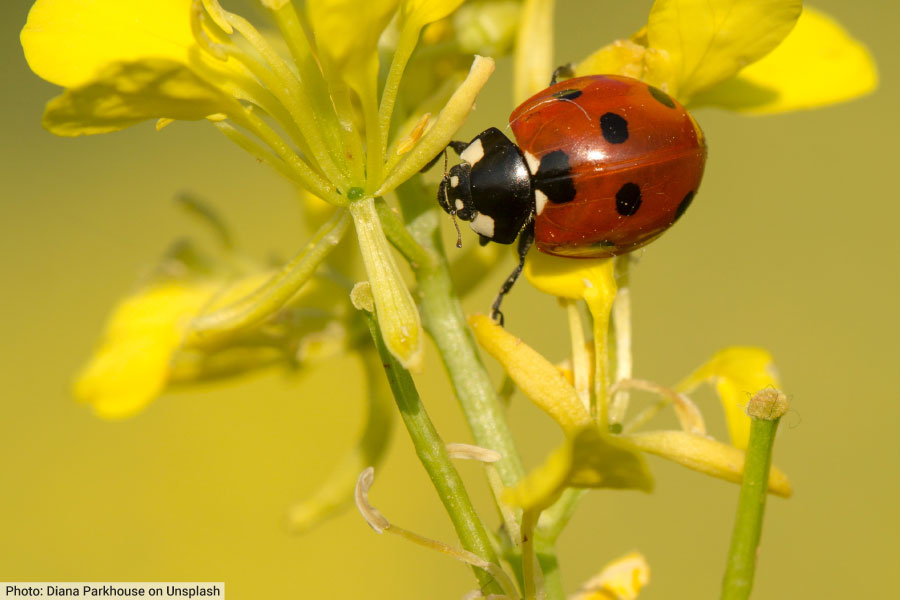
- Type of animal: Insect
- Order: Coleoptera (beetles)
- Family: Coccinellidae
- Where found: All continents except Antarctica
Ladybugs are a family small beetles known for their brightly-colored, spotted wing cases and rounded body shape. Lady bugs are known as “ladybirds” outside of North America.
The 6,000-plus species of ladybug make up the family Coccinellidae. Ladybugs are found all around the world.
Ladybugs feed on crop-eating insects such as aphids (greenflies). For this reason, gardeners are often pleased to see ladybugs on their vegetables!
Some ladybug species, such as the harlequin ladybird, Harmonia axyridis, which is native to Asia, are considered invasive species in other parts of the world.
The harlequin ladybird was originally introduced to Europe and North America as a natural means of controlling crop-destroying insects. Unfortunately, its presence is highly-detrimental to native ladybug species.
Discover More With Active Wild
You can find out more about insects on this page: Insects - The Ultimate Guide
You can find out more about beetles on this page: Beetle Facts
Lammergeier
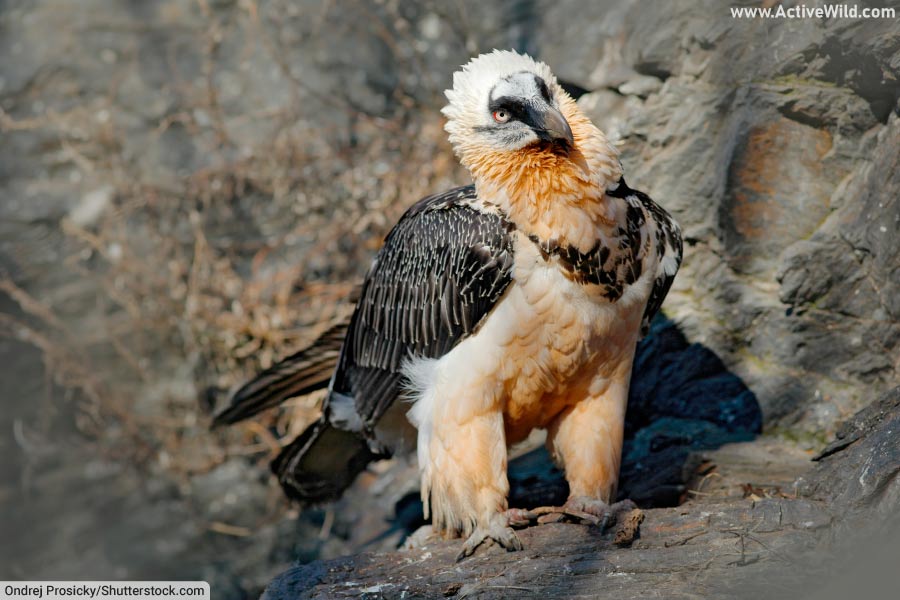
- Scientific name: Gypaetus barbatus
- Type of animal: Bird
- Family: Accipitridae
- Where found: Europe, Asia, Africa
- Conservation status: Near Threatened
Also known as the “bearded vulture”, the lammergeier is a vulture found in mountainous regions in Europe, Asia and Africa.
Although the lammergeier’s range (the area in which it is found) is large, spanning three continents, the species is very rare and it is thought that there are fewer than 7,000 lammergeiers left in the wild.
One of the few vultures to have a feathered head, the lammergeier has a wingspan of up to 2.83 m / 9 ft 3 in.
Like other vultures, the lammergeier feeds on carrion. The species is unique among vertebrates in that its diet consists mainly of bone. As an adaptation for its unusual diet, the lammergeier’s stomach juices are highly acidic, capable of breaking down large bones within 24 hours.
Discover More With Active Wild
You can find out more about birds on this page: Birds - The Ultimate Guide
You can see different types of bird on this page: Types Of Birds With Pictures & Facts
Lapwing
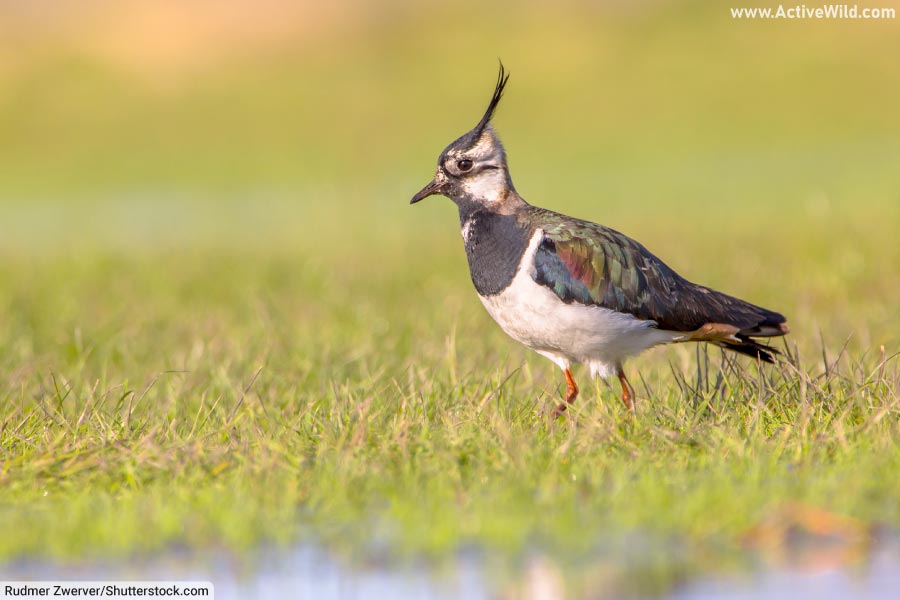
- Type of animal: Bird
- Family: Charadriidae
- Where found: All continents except Antarctica
Lapwings are 24 species of ground-nesting birds that make up the subfamily Vanellinae, which is part of the shorebird family, Charadriidae.
Lapwings fly with distinctive, slow wingbeats and can also be recognized by their long, nasal calls, which have earned them the nickname "peewit" in some parts of the world.
Lapwings are found on every continent except Antarctica, and they typically inhabit open areas such as grasslands, wetlands, and agricultural fields. Their diet consists primarily of insects, but they will also eat small invertebrates such as snails and earthworms.
Lapwings are among the most threatened bird groups in the world, due mainly to habitat loss and degradation.
Discover More With Active Wild
You can find out more about birds on this page: Birds - The Ultimate Guide
You can see different types of bird on this page: Types Of Birds With Pictures & Facts
Leafcutter Ant
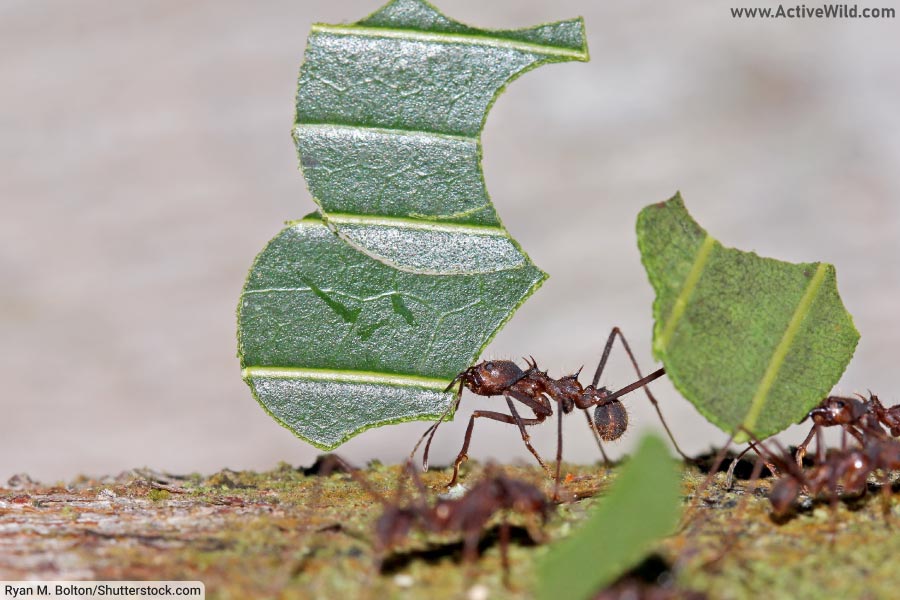
- Type of animal: Insect
- Family: Formicidae
- Where found: South America, Central America
Leafcutter ants are large ants found in Central and South America. The 47 species of leafcutter ant are divided between two genera: Atta and Acromyrmex.
Like other ants, leafcutter ants are highly social, living in colonies consisting mainly of female workers. Leafcutter ant colonies are particularly large, and can contain up to 8 million insects.
Leafcutter ants collect leaves and other vegetation and bring it to their nests. Here, the plant matter is chewed and used to grow fungus in an area of the nest known as a “fungal garden”. The fungus is eaten by the queen and the other ants that don’t leave the nest.
Discover More With Active Wild
You can find out more about leafcutter ants on this page: Leafcutter Ant Facts
You can find out more about insects on this page: Insects - The Ultimate Guide
Leatherback Sea Turtle
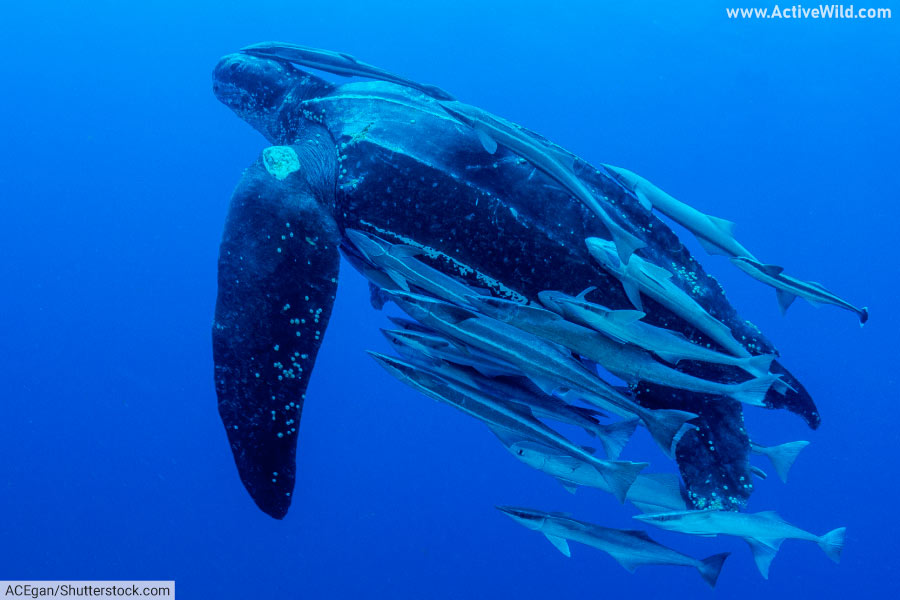
- Scientific name: Dermochelys coriacea
- Type of animal: Reptile
- Family: Dermochelyidae
- Where found: Oceans worldwide
- Conservation status: Vulnerable
The leatherback sea turtle is the world’s largest turtle and the fourth-heaviest living reptile (only three crocodilians are larger). The leatherback sea turtle gets its name from its thick, leathery carapace (shell). It is the only sea turtle not to have a hard shell.
Leatherback turtles migrate long distances between their breeding and feeding grounds, and are found in tropical and temperate waters all around the world. The species has also been found within the Arctic Circle.
The leatherback turtle is the only species in the family Dermochelyidae. The six other sea turtle species are in the family Cheloniidae.
Discover More With Active Wild
You can find out more about leatherback turtles on this page: Leatherback Turtle Facts
Discover more about sea turtles on this page: Sea Turtle Facts
Leech
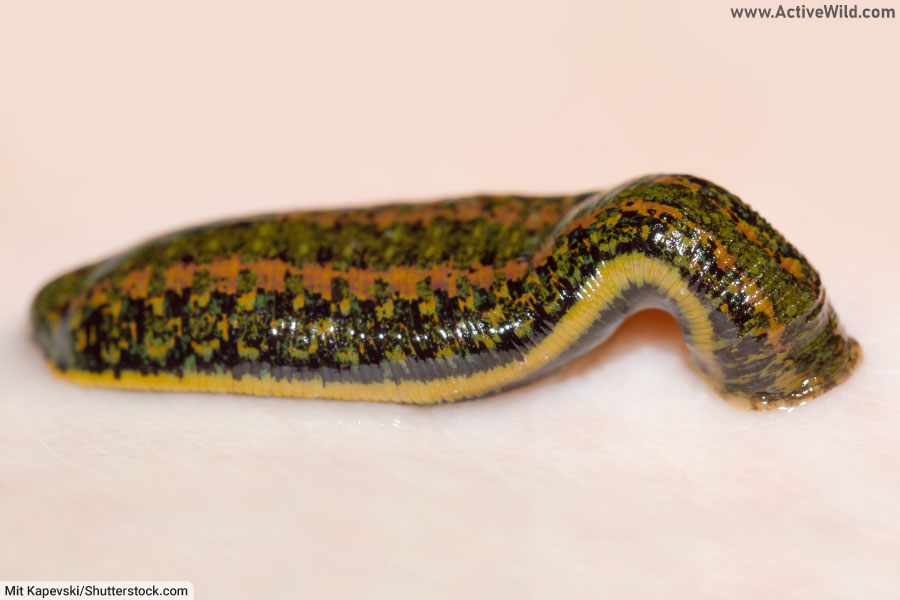
- Type of animal: Segmented worm (phylum Annelida)
- Where found: All continents except Antarctica
Leeches are annelids (ringed worms) in the subclass Hirudinea. They are related to earthworms, and can be differentiated from these and similar worm types by the presence of a sucker at both ends of their bodies. Leeches use both suckers when moving, and some leeches are also able to swim.
Most leeches are parasitic, using their specially-adapted mouthparts to attach themselves to other animals (including humans) in order to drink their blood. The mouths of blood-sucking leeches contain hundreds of tiny, sharp teeth.
In the past, leeches were used to treat various ailments; it was thought that having blood removed by a leech would help restore the body’s natural balance.
Discover More With Active Wild
Leeches are animals, just like lions, tigers and humans! You can find out more about the different types of animals on this page: Types Of Animals
Lemming
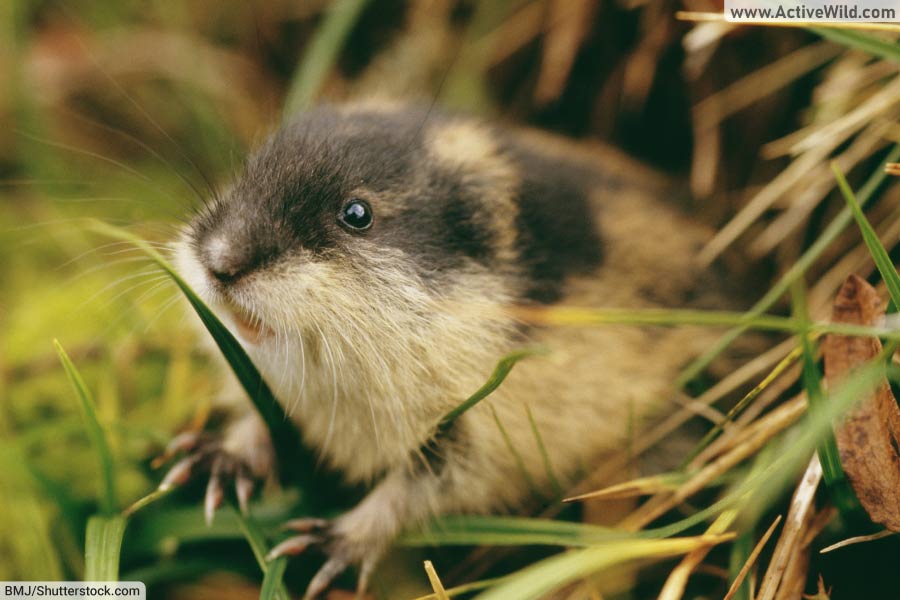
- Type of animal: Mammal
- Family: Cricetidae
- Where found: The Arctic and sub-Arctic
Lemmings are around 19 species of small rodents found in Arctic and sub-Arctic regions. They are closely-related to voles and muskrats; together with these animals they form the subfamily Arvicolinae.
Lemmings are herbivores (plant-eaters), that feed on a variety of plant matter, including leaves and shoots.
Under certain conditions, lemming populations can suddenly swell dramatically. These population booms cause large numbers of lemmings to migrate away from their birthplaces.
These large-scale migrations gave rise to the myth that large groups of lemmings throw themselves off cliffs.
Discover More With Active Wild
You can find out more about lemmings here: Lemming Facts
Discover more Arctic animals on this page: Arctic Animals Pictures & Facts
Lemur
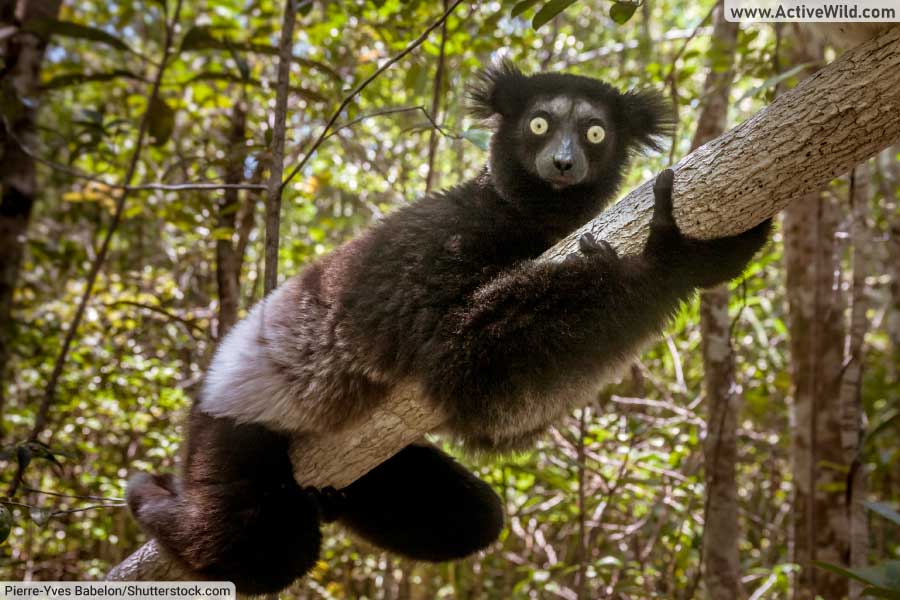
- Type of animal: Mammal
- Superfamily: Lemuroidea
- Where found: Madagascar
Lemurs are a group of primates found only on the African island-country, Madagascar.
There are around 100 species of lemur. Together, they make up the primate superfamily Lemuroidea.
Lemurs are thought to have evolved from loris-like primates that were carried to Madagascar from Africa on a raft of vegetation around 50 to 60 million years ago. With little competition from other mammals, lemurs subsequently evolved to fill many ecological niches.
The smallest lemur is the mouse lemur, which, with a head-tail length of 27 cm / 11 in., is the world’s smallest primate.
The largest lemur is the indri. This black and white herbivorous lemur is almost 1.2 m / 4 ft. tall with its legs extended. Like many lemurs, the indri is critically endangered.
Discover More With Active Wild
You can find out more about primates on this page: Primates - The Ultimate Guide
You can find out about ring tailed lemurs on this page: Ring Tailed Lemur Facts
Leopard

- Scientific name: Panthera pardus
- Type of animal: Mammal
- Family: Felidae (the cat family)
- Where found: Africa, Asia
- Conservation status: Vulnerable
The leopard is the world’s fourth-largest cat species (only the tiger, lion and jaguar are larger). Its distinctive coat is golden-yellow and covered in spots known as “rosettes” (in fact, the rosettes are more like “rings” than “spots”).
The leopard is found across a wider range, and in a wider variety of habitats, than any other old world cat species. The leopard can live in habitats ranging from rainforests to deserts, and occasionally even ventures into human settlements.
This adaptable carnivore preys on a wide variety prey, with mid-sized hooved animals such as antelopes and deer most likely to be targeted.
Leopards are known for their stealth and great strength. In order to prevent other predators from stealing its food, a leopard will often drag its prey up a tree.
Discover More With Active Wild
You can find out more about leopards on this page: Leopard Facts
Find out more about big cats on this page: Big Cats
You can see a list of ALL cat species on this page: Cat Species List with Pictures & Facts
Leopard Cat
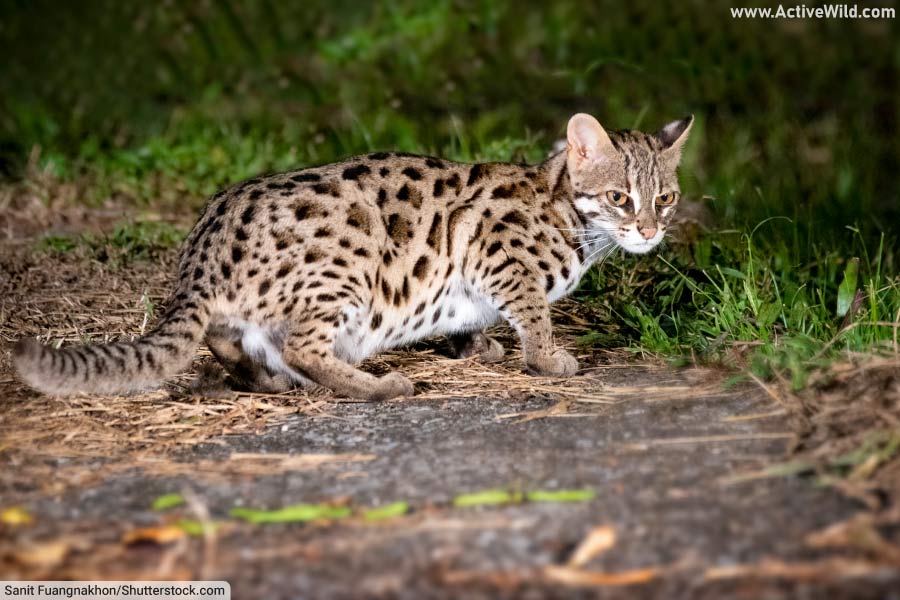
- Scientific name: Prionailurus bengalensis
- Type of animal: Mammal
- Family: Felidae (cats)
- Where found: Asia
- Conservation status: Least Concern
The leopard cat is a small, agile felid found in forests throughout much of Asia. Its coat is marked with spots, rosettes, and stripes, which provide excellent camouflage for stalking prey through the underbrush.
Although its diet consists primarily of small mammals and birds, the leopard cat is also known to take reptiles, amphibians, and even fish. In some parts of its range, the leopard cat is considered a nuisance by farmers, as it has been known to kill chickens and other livestock.
The species’ primary threat comes from habitat loss / fragmentation caused by human activity.
Discover More With Active Wild
You can see a list of ALL cat species on this page: Cat Species List with Pictures & Facts
Discover more rainforest animals on this page: Rainforest Animals List with Pictures
Leopard Frog
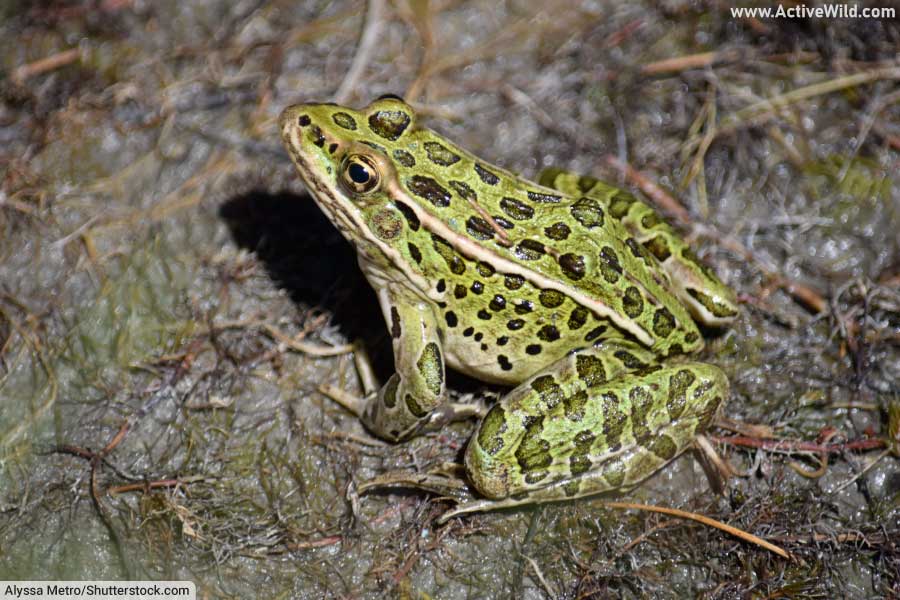
- Type of animal: Amphibian
- Family: Ranidae (true frogs)
- Genus: Lithobates
- Where found: North America, South America
The 23 species of leopard frog make up the genus Lithobates, which is part of the “true frog” family, Ranidae. All leopard frogs are found in North America.
Leopard Frogs are semi-aquatic frogs that can be found near ponds, lakes, and streams in wooded areas. All are either green or brown with dark spots on the back and sides. They are great swimmers and can jump long distances.
Leopard Frogs are found throughout the United States, South America, and Canada. It is an amphibian, meaning that it can live both on land and in water. The Leopard Frog eats insects, spiders, and small invertebrates.
It is an important part of the ecosystem, helping to control the population of these animals. The Leopard Frog is also an important food source for other animals, such as snakes, birds, and mammals.
Discover More With Active Wild
You can find out more about amphibians on this page: Amphibians - The Ultimate Guide
Discover more amphibians on this page: Amphibians List with Pictures & Facts
Leopard Seal
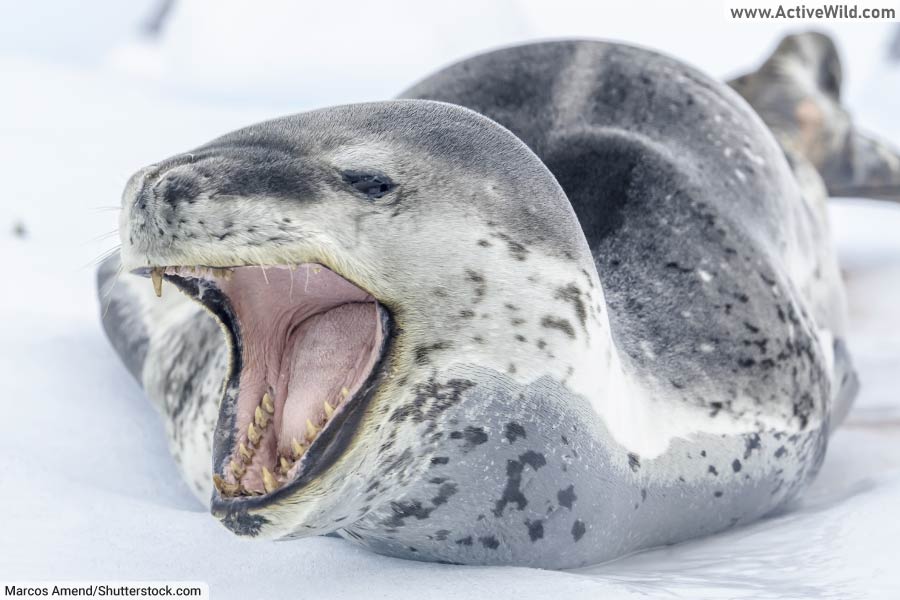
- Scientific name: Hydrurga leptonyx
- Type of animal: Mammal
- Family: Phocidae
- Where found: Antarctica
- Conservation status: Least Concern
The leopard seal is a large seal found along the coastline of Antarctica. The second-largest Antarctic seal (after the massive southern elephant seal), the leopard seal reaches lengths of up to 3.6 m / 11 ft. 10 in., and weighs up to 450 kg / 992 lb. Dark, leopard-like spots on its chest and undersides give the species its name.
Armed with powerful jaws and sharp teeth, the leopard seal is a ferocious predator. It hunts penguins and other seals, and is even known to attack humans, both in the water and on the ice.
Discover More With Active Wild
You can find out more about leopard seals on this page: Leopard Seal Facts
Discover more Antarctic animals on this page: Antarctic Animals List with Pictures & Facts
Leopard Tortoise
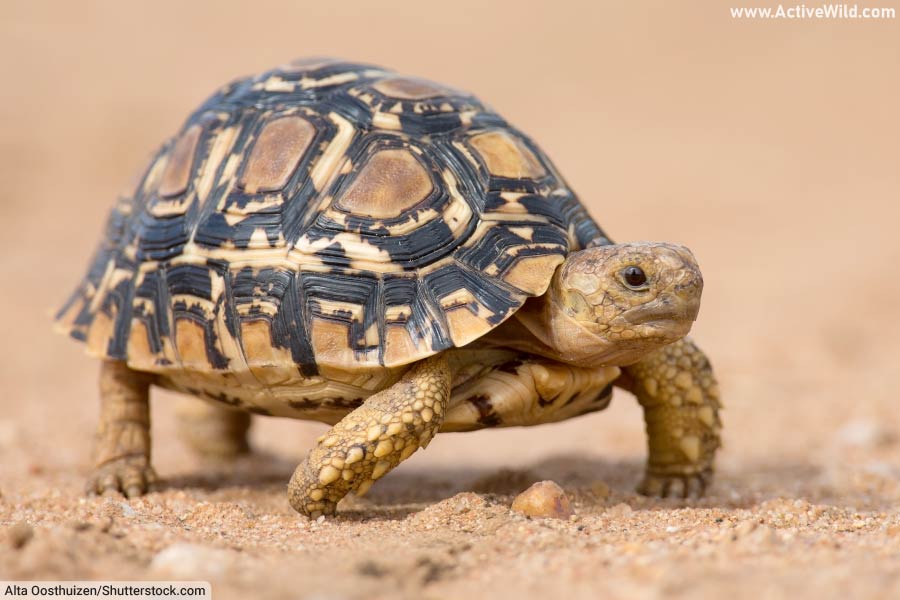
- Scientific name: Stigmochelys pardalis
- Type of animal: Reptile
- Family: Testudinidae (tortoises)
- Where found: Africa
- Conservation status: Least Concern
The leopard tortoise grows to lengths of up to 40 cm / 15.75 in., and is the world’s fourth-largest tortoise. This handsome reptile is easily recognized by its striking shell. The shell is high-domed, and its color varies from yellow to gray, with black spots or streaks.
These tortoises are found throughout Africa, from Senegal in the west to Ethiopia in the east. They inhabit a wide range of habitats, including savannas, woodlands, and even semi-desert regions.
They are active during the day, and they are excellent swimmers. When night falls, they retreat into their shells to sleep.
The leopard tortoise is a herbivore (plant-eater). The tortoise prefers to eat grasses, but it will also eat other vegetation, such as leaves and fruits.
A common pet across the west, the leopard tortoise is also an important food source for many African peoples.
Discover More With Active Wild
You can find out more about reptiles on this page: Reptiles - The Ultimate Guide
You can see more African reptiles on this page: Reptiles Of Africa
Liger

- Scientific name: Panthera leo♂ × Panthera tigris♀
- Type of animal: Mammal
- Family: Felidae
- Where found: Usually Bred In Captivity
- Conservation status: n/a
The liger is a hybrid; the result of a mating between a male lion and a female tiger. (The hybrid offspring of a male tiger and a female lion is known as a “tigon”.)
Ligers are often bigger than both parents, and are the world’s largest cats. A liger has physical and behavioral characteristics of both parents, having faint stripes like a tiger, and being social like a lion.
Discover More With Active Wild
Find out more about big cats on this page: Big Cats
You can see a list of ALL cat species on this page: Cat Species List with Pictures & Facts
Limpet
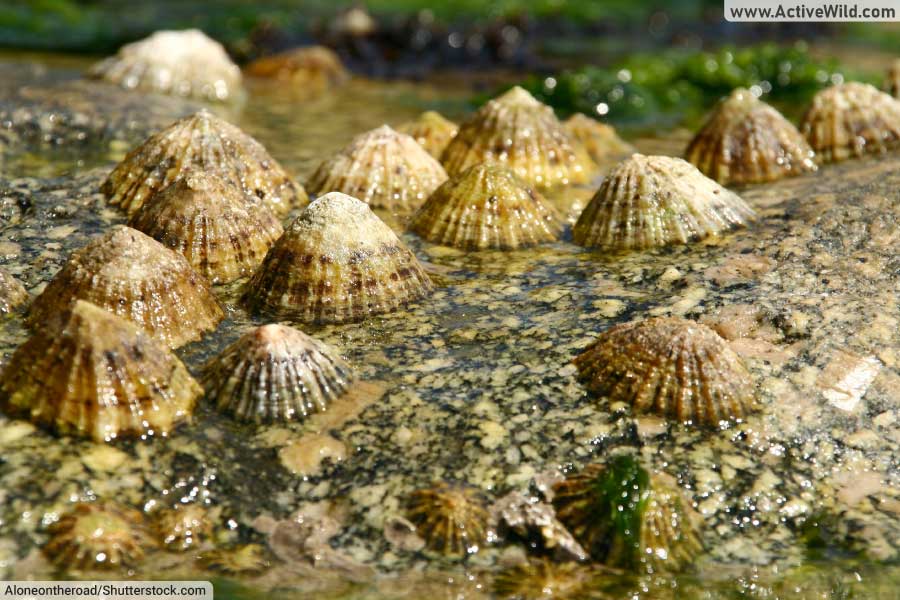
- Type of animal: Mollusk
- Where found: All Oceans
Limpets are small, shelled animals that attach themselves to rocks and feed on algae. Most limpets are found in saltwater environments, although there are limpets that live in freshwater.
Limpets are members of the class (a large group of related animals) Gastropoda. Other gastropods include snails and slugs.
Gastropoda is part of a larger group of animals, the phylum Mollusca. Animals in this group, which also contains bivalves such as oysters and mussels, and cephalopods such as octopuses and squid, are known as “mollusks”.
Discover More With Active Wild
You can find out more about the different types of animals on this page: Types Of Animals
Discover more amazing ocean animals on this page: Ocean Animals
Lion
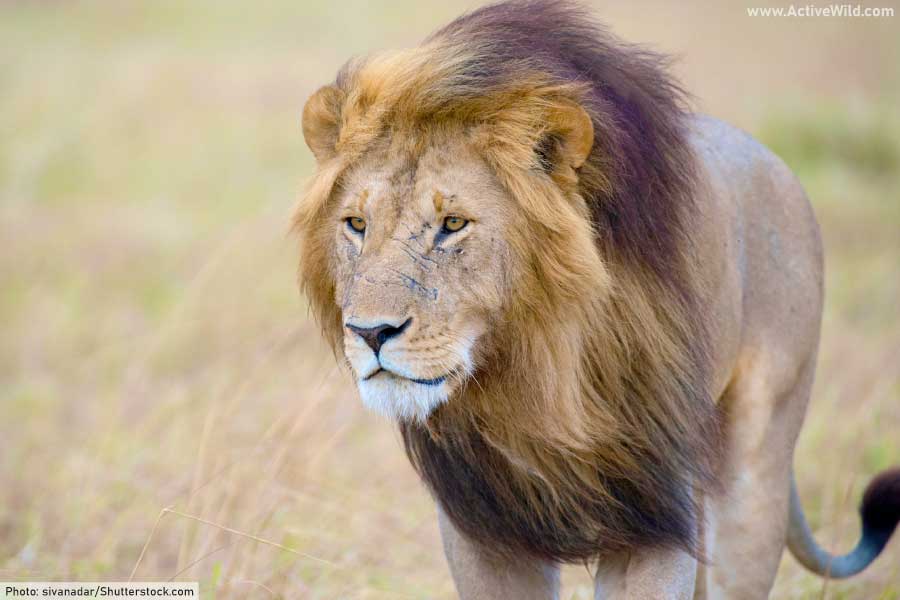
- Scientific name: Panthera leo
- Type of animal: Mammal
- Family: Felidae
- Where found: Africa, Asia (India)
- Conservation status: Vulnerable
The lion is the world’s second-largest species of cat. Only the tiger is larger, although there is an amount of overlap in the species’ sizes (i.e., many lions are larger than tigers).
The male lion, with its distinctive flowing mane, is one of the world’s most recognizable animals.
Most wild lions live in Africa. The only lions found in the wild outside of Africa live in India’s Gir Forest National Park and Wildlife Sanctuary. A 2015 survey found that there were 523 lions present in this area.
Lions are able to live in a wide range of habitats, only avoiding tropical rainforests and the interior of the Sahara desert.
The lion is more social that most other cats. It lives and hunts in groups called prides. Lions are apex predators, with no natural predators of their own.
Discover More With Active Wild
You can find out more about lions on this page: Lion Facts
You can find out more about big cats on this page: Big Cats Facts
Lionfish
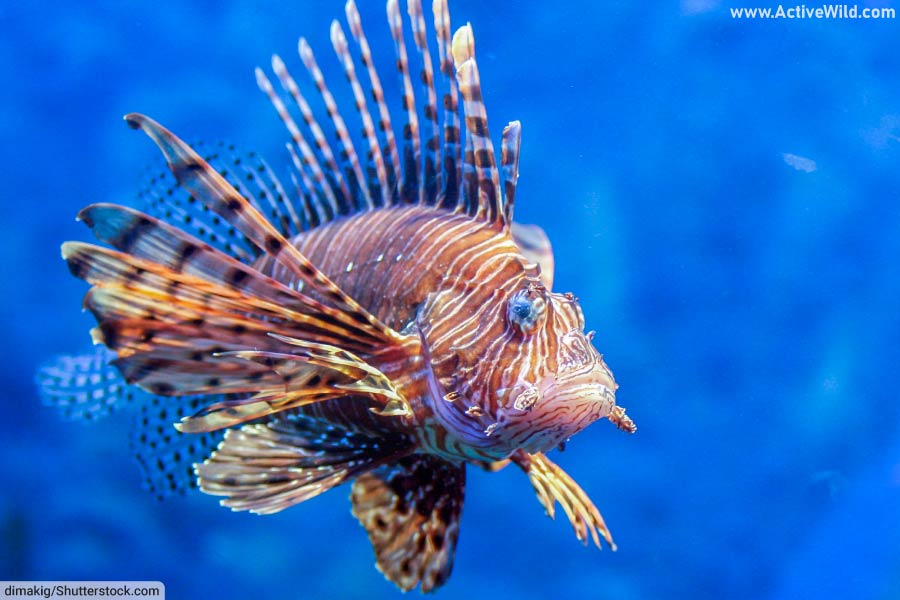
- Type of animal: Fish
- Family: Scorpaenidae (venomous scorpionfish)
- Genus: Pterois
- Where found: Indo-Pacific Ocean
Lionfish are a genus, Pterois, of beautiful but dangerous marine fish. The 12 recognized species are native to the Indo-Pacific region, but can now be found in waters all over the world. They get their name from the large fins on their body, which resembles a lion's mane.
Lionfish are predators and have a voracious appetite. They can grow up to 45.7 cm / 18 inches long, and their venomous spines make them very dangerous to other animals, including humans. A sting from a lionfish is extremely painful and potentially fatal to children and the elderly.
Some lionfish species are considered to be invasive species in some areas, as they have no natural predators. Scientists are working on ways to control the lionfish population, but no solution has been found so far.
The lionfish is a popular aquarium fish due to its bright colors and docile nature.
Discover More With Active Wild
Discover more amazing ocean animals on this page: Ocean Animals
Lizard
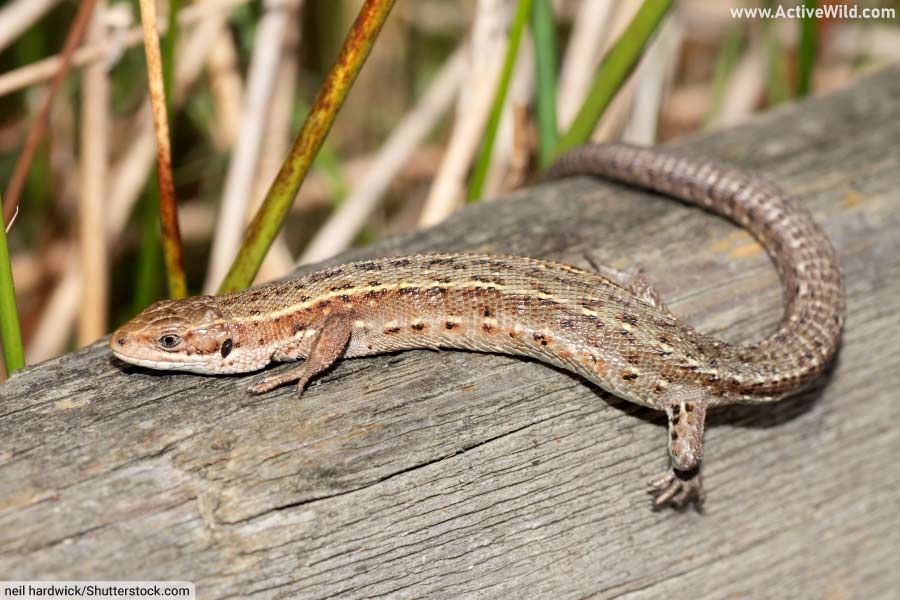
- Type of animal: Reptile
- Order: Squamata
- Where found: all continents except Antarctica
Lizards are reptiles that, along with snakes and amphisbaenians (worm-lizards), make up the order Squamata.
Lizards are found on all continents except Antarctica, and range in size from tiny geckos to the Komodo dragon. There are over 7,000 different species of lizard, making lizards the most diverse reptile group.
Most lizards are predators, and many have long tongues to catch prey. Some species of lizard can change color, which helps them to camouflage themselves from predators.
Lizards are ectothermic (cold-blooded), meaning that they rely on an external heat source to regulate their body temperature. Lizards are often found either basking in the sun or hiding in cool, shady areas.
Lizards are an essential part of many ecosystems, providing food for predators and helping to control insect populations. Some lizards are also important cultural symbols.
Discover More With Active Wild
Discover more amazing lizards on this page: Types Of Lizards
You can find out more about reptiles on this page: Reptiles - The Ultimate Guide
Llama
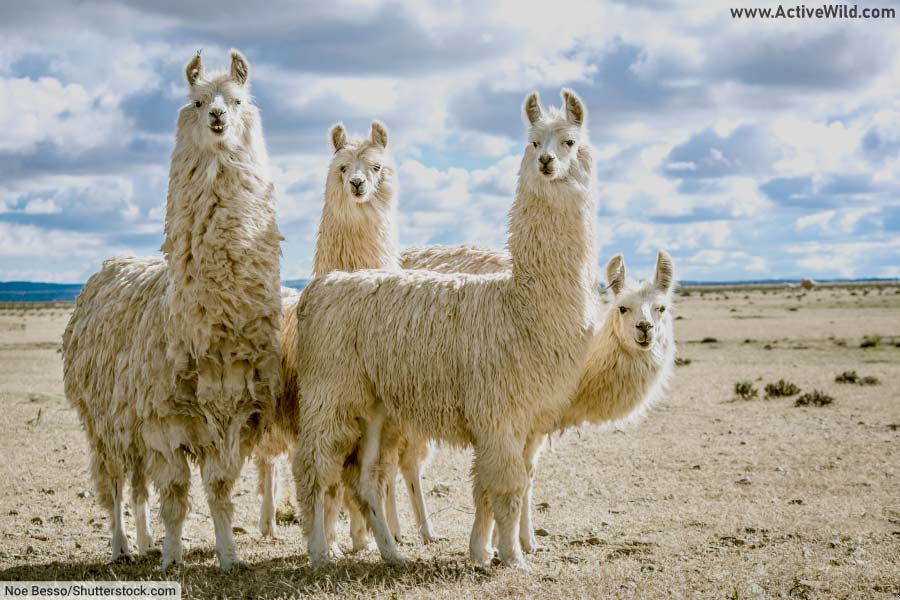
- Scientific name: Lama glama
- Type of animal: Mammal
- Family: Camelidae
- Where found: Originally South America
- Conservation status: n/a (Domestic)
The llama is a domesticated member of the camel family, Camelidae. Its ancestors are the wild camelids, the guanaco and vicuña.
The llama was originally domesticated in South America over a thousand years ago, and domestic llamas were used by the Incas.
Today, the llama is farmed for its wool not just in South America but also in many other parts of the world.
Discover More With Active Wild
You can find out more about mammals on this page: Mammals - The Ultimate Guide
Discover the different types of mammals on this page: Types Of Mammal
Lobster

- Type of animal: Crustacean
- Family: Nephropidae
- Where found: Oceans Worldwide
Lobsters are large marine crustaceans. Like all crustaceans, lobsters have segmented bodies that are protected by a hard exoskeleton. Lobsters belong to a group of crustaceans known as “decapods” on behalf of their ten legs. This group is also home to animals such as crabs and shrimp.
Each of a lobster’s front three pairs of legs have claws; those on the foremost pair are much larger than the others, and are capable of giving you a painful pinch!
Lobsters use their long antennae to feel their way around the dark ocean floor.
Discover More With Active Wild
You can find out more about crustaceans on this page: Crustaceans - The Ultimate Guide
Discover more amazing ocean animals on this page: Ocean Animals
Locust
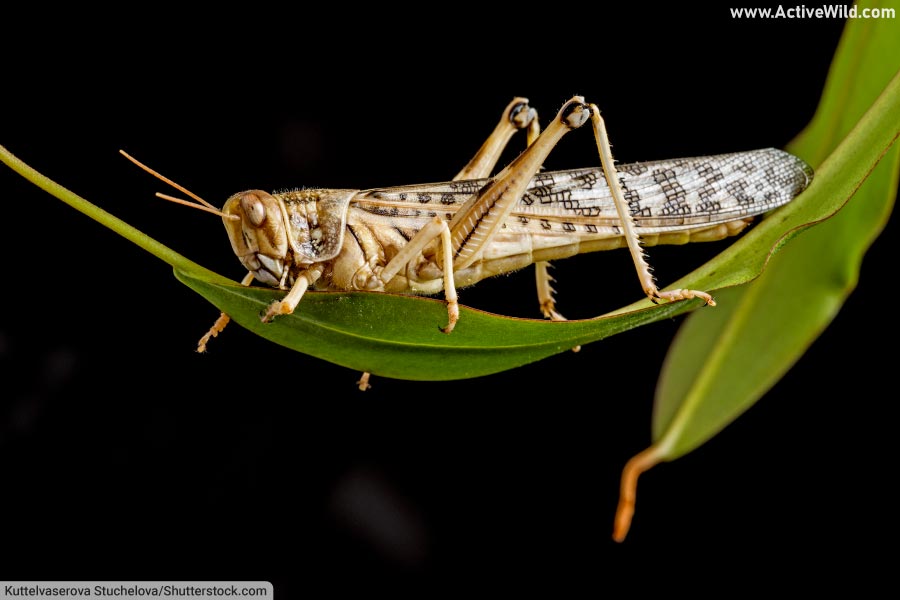
- Type of animal: Insect
- Family: Acrididae
- Where found: All continents except Antarctica
Locusts are several species of grasshopper in the family Acrididae. Like all grasshoppers, lobsters have long, powerful hind legs, enabling them to jump long distances.
Locusts differ from other grasshoppers in that, under certain conditions, they will swarm. When swarming, the usually solitary locusts flock together and rapidly multiply, forming huge, wandering groups that can cause immense damage to crops.
Swarming usually occurs during periods of rapid vegetation growth following a drought.
Discover More With Active Wild
You can find out more about insects on this page: Insects - The Ultimate Guide
Loggerhead Sea Turtle
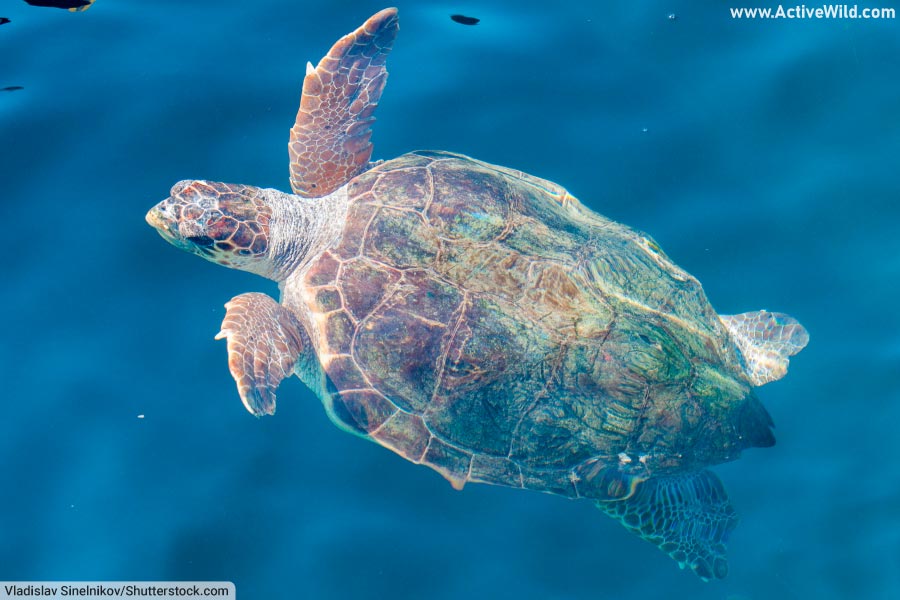
- Scientific name: Caretta caretta
- Type of animal: Reptile
- Family: Cheloniidae
- Where found: Oceans Worldwide
- Conservation status: Vulnerable
The loggerhead sea turtle is the largest of six sea turtles that together make up the family Cheloniidae.
(The only other living sea turtle, the leatherback sea turtle, belongs to a separate family, Dermochelyidae, and is the largest living sea turtle.)
The carapace (shell) of the loggerhead sea turtle ranges in color from orange to brown. The plastron (the hard ‘breastplate’ covering the underside of the turtle) is yellow. The adult turtle’s large size and hard shell keep it safe from most ocean predators.
Loggerhead sea turtles found in the Pacific Ocean make one of the longest migrations of any marine animal, hatching in Japan and foraging off the coast of North America.
Discover More With Active Wild
You can find out more about the loggerhead sea turtle on this page: Loggerhead Sea Turtle Facts
Discover more about sea turtles on this page: Sea Turtle Facts
Long-Eared Owl
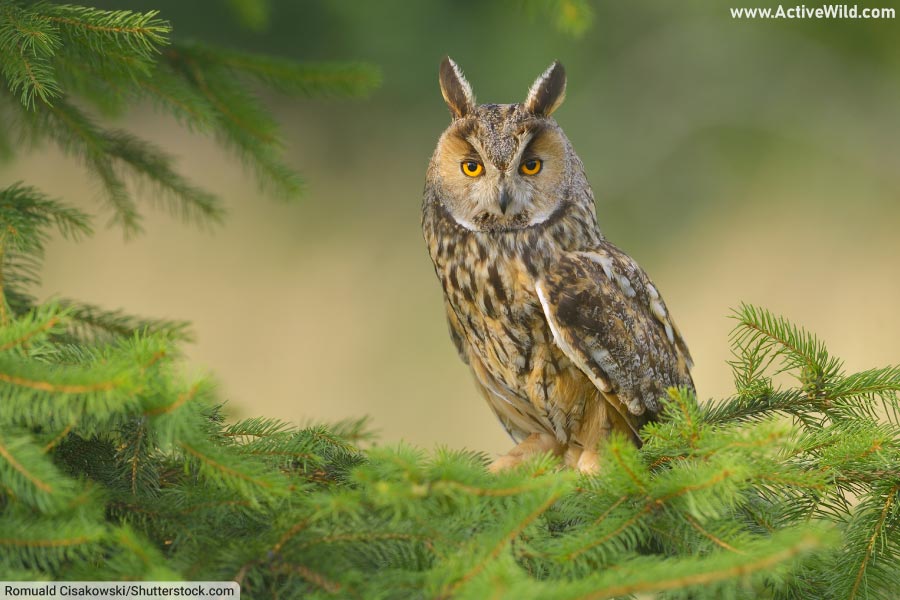
- Scientific name: Asio otus
- Type of animal: Bird
- Family: Strigidae (true owls)
- Where found: North America, Europe, Asia, Africa
- Conservation status: Least Concern
The Long-Eared Owl is a medium-sized owl with striking ear tufts that extend well beyond the head. These ear tufts, which are actually feathers, help the owl blend in with its surroundings and make it difficult for potential prey to spot.
Despite its vast geographical distribution, the Long-Eared Owl is found most densely in open woodlands and forests across North America and Europe. It typically nests in trees, using the same nest site for many years.
This impressive animal is an accomplished hunter, using its sharp vision and hearing to locate small mammals such as mice and voles. If the opportunity arises, it will also take birds, reptiles, and insects.
Discover More With Active Wild
You can find out more about birds on this page: Birds - The Ultimate Guide
You can see different types of bird on this page: Types Of Birds With Pictures & Facts
Longhorn Cowfish
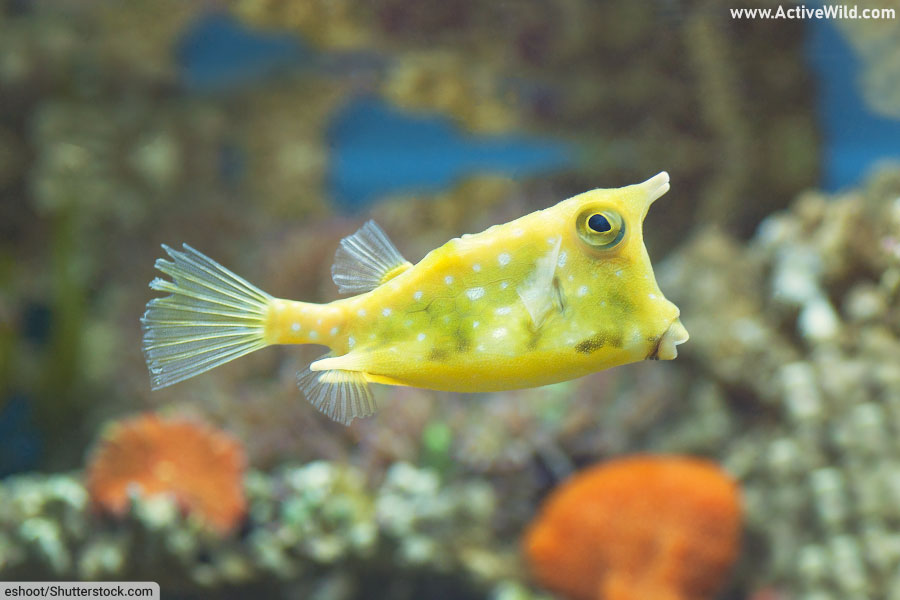
- Scientific name: Lactoria cornuta
- Type of animal: Fish
- Family: Ostraciidae
- Where found: Indo-Pacific region
- Conservation status: Unassessed
The longhorn cowfish is a bizarre-looking fish found in the warm waters of the Indo-Pacific region.
As its name suggests, the longhorn cowfish is distinguished by its long, horn-like fins. It is a slow-moving species that feeds on small invertebrates. It lacks pelvic fins, and doesn’t bend its body when swimming, seemingly “hovering” in the water.
A weak swimmer, the cowfish often relies on currents to move around.
Discover More With Active Wild
Discover more amazing ocean animals on this page: Ocean Animals
You can see more ugly animals on this page: Ugly Animals List with Pictures
Longnose Gar
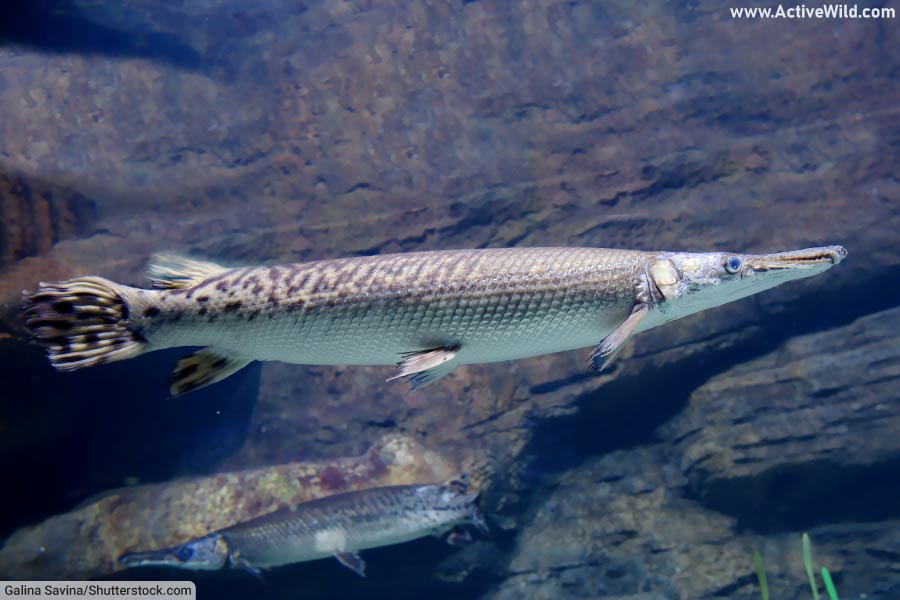
- Scientific name: Lepisosteus osseus
- Type of animal: Fish
- Family: Lepisosteidae (gars)
- Where found: North America, Central America, Cuba
- Conservation status: Least Concern
The longnose gar is a fish found in freshwater all over North America. It gets its name from its long, needle-like nose, which it uses to jab at its prey.
A predator, the longnose gar will eat just about anything that it can fit into its mouth. This includes other fish, reptiles, amphibians, and even small mammals. In fact, the longnose gar has been known to attack humans who venture too close to its territory.
However, despite its fearsome appearance, the longnose gar is not generally considered dangerous to humans. It is a popular gamefish, and many anglers enjoy targeting this elusive species.
Discover More With Active Wild
Discover more amazing ocean animals on this page: Ocean Animals
Long-Tailed Tit / Long-Tailed Bushtit
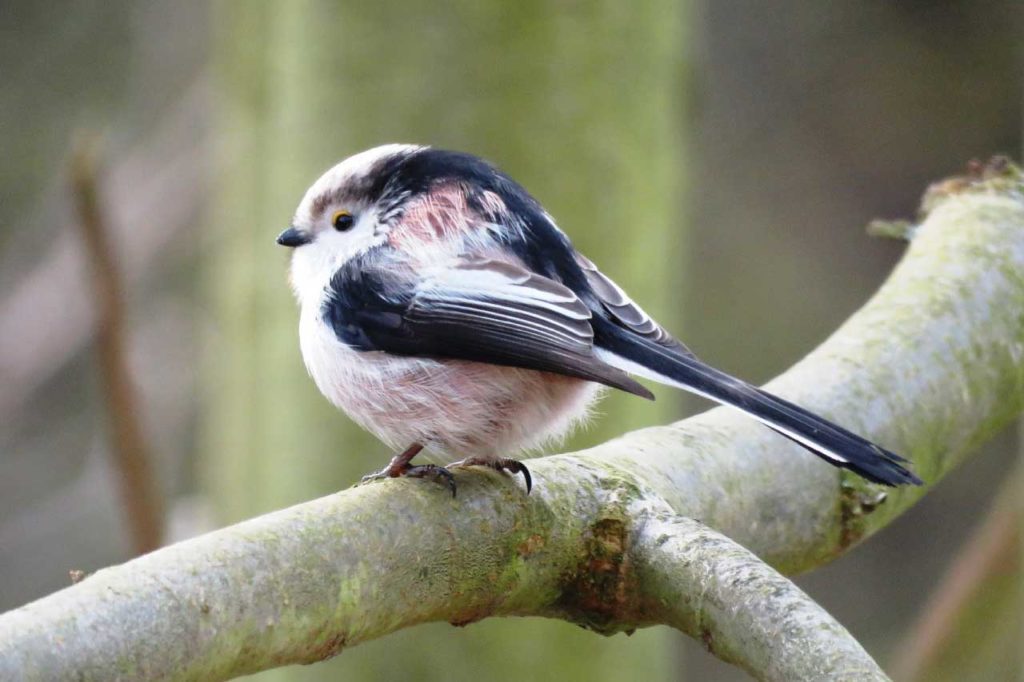
- Scientific name: Aegithalos caudatus
- Type of animal: Bird
- Family: Aegithalidae (bushtits)
- Where found: Europe and Palearctic
- Conservation status: Least Concern
The long-tailed tit is a small but distinctive member of the bushtit family, Aegithalidae. Its body, which is black and white with white underparts, looks very small in comparison to the long, narrow, black tail.
Found across a vast range stretching from western Europe to Japan, the long-tailed tit inhabits woodlands, farmlands and even gardens.
The species’ nests, which are made of lichen, moss and cobwebs, are attached to branches in trees and bushes. The birds are highly sociable and often form groups comprising several, related mated pairs and their offspring.
If the nest of a mated pair fails, instead of trying again, they will often help out with a neighboring nest.
Discover More With Active Wild
You can find out more about birds on this page: Birds - The Ultimate Guide
You can see different types of bird on this page: Types Of Birds With Pictures & Facts
Loris
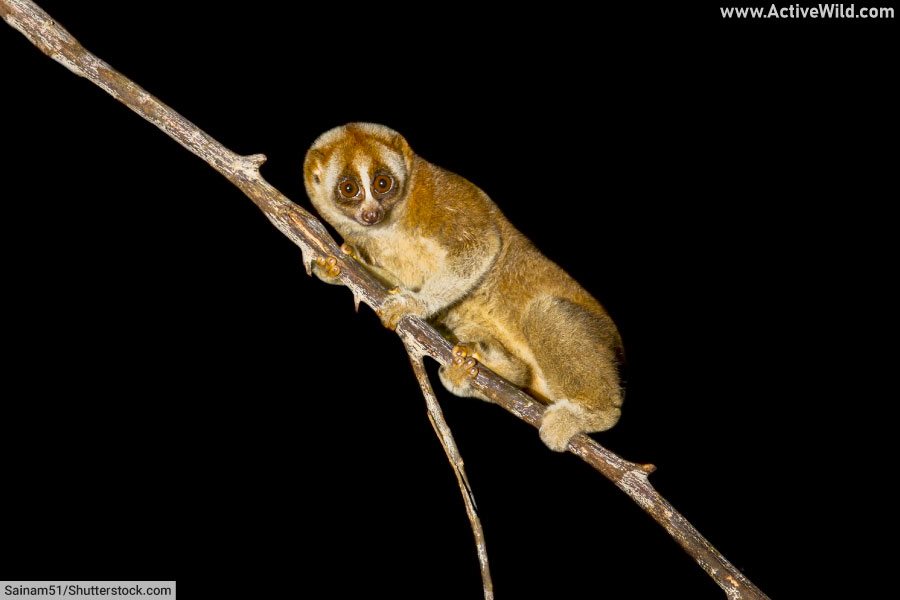
- Type of animal: Mammal
- Family: Lorisidae
- Where found: Asia
Lorises are nocturnal, insect-eating primates that live in the tropical forests of south and southeastern Asia.
Lorises make up the subfamily Lorinae, which is part of the family Lorisidae, which also contains pottos.
There are three types of loris: slender lorises (genus Loris); slow lorises (Genus Nycticebus); and pygmy slow lorises (genus Xanthonycticebus).
In order to protect their young from predators, adult lorises lick the infants, covering them with saliva that is mildly poisonous.
Discover More With Active Wild
You can find out more about lorises on this page: Loris Facts
You can find out more about the red slender loris on this page: Red Slender Loris Facts
Discover more amazing rainforest animals on this page: Rainforest Animals List with Pictures
Lungfish
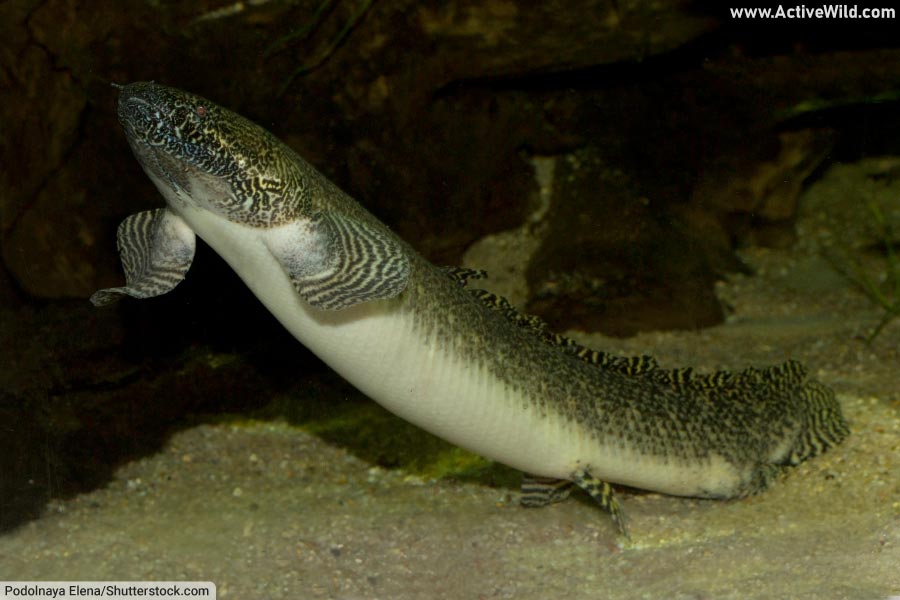
- Type of animal: Fish
- Where found: Africa; South America; Australia
Lungfish are a group of freshwater fish that breathe air with lungs. This distinguishes them from most other fish, which “breathe” using gills.
Five of the six living species of lungfish are fully dependent on their lungs; only the Australian lungfish (also known as the Queensland lungfish), is also able to breathe solely with its gills.
Lungfish are large fish with long, eel-like bodies. The Queensland lungfish is considered a ‘living fossil’, because it has changed very little in the 100 million plus years of its existence.
Discover More With Active Wild
You can find out more about the freshwater biome on this page: Freshwater Biome Facts
Lynx
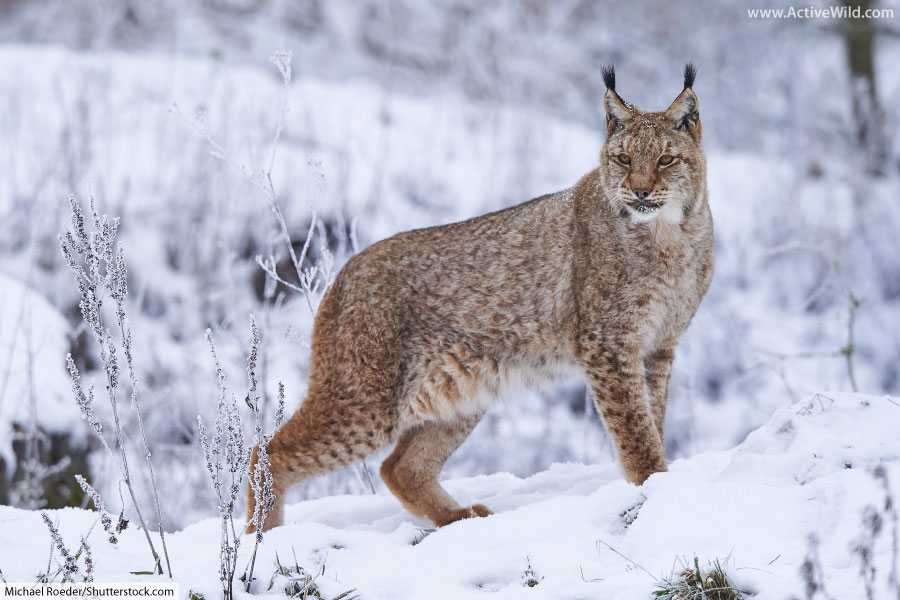
- Type of animal: Mammal
- Family: Felidae
- Where found: North America; Europe, Asia
Lynx are four species of medium-sized wild cats, which together make up the genus Lynx. Lynx can be recognized both by their short tails and the distinctive tufts of black hair at the end of their ears.
The four species of lynx, along with their scientific name, conservation status and the continent(s) upon which they are found, are listed below:
- Eurasian Lynx Lynx lynx Least Concern Europe & Asia
- Iberian Lynx Lynx pardinus Endangered Europe (Spain)
- Canada Lynx Lynx canadensis Least Concern North America
- Bobcat Lynx rufus Least Concern North America
Discover More With Active Wild
Find out more about the Eurasian lynx on this page: Eurasian Lynx Facts
You can find out more about the bobcat on this page: Bobcat Facts
You can see a list of every wild cat species (with pictures & facts) on this page: Wild Cat Species List
Lyrebird
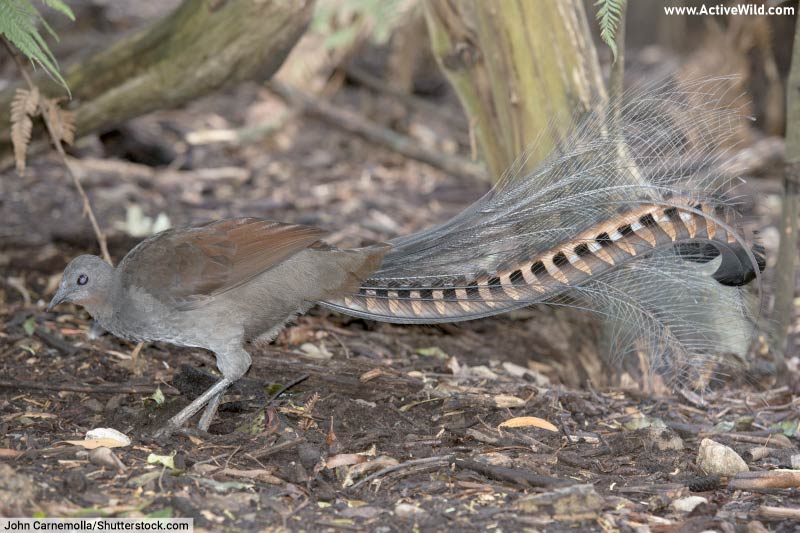
- Type of animal: Bird
- Family: Menuridae
- Genus: Menura
- Where found: Australia
Lyrebirds are known for their striking looks and impressive ability to mimic sounds.
There are two species of lyrebird: superb lyrebird and Albert’s lyrebird; both are found in Australia. These pheasant-sized birds are some of the largest passerines, reaching lengths of up to 90cm / 35.5 in. (only some ravens are larger).
The two main tail feathers of the male lyrebird, which can be up to 60 cm / 23.6 in long, curve back over its body, resembling a lyre. The tail feathers are used for display during courtship rituals.
Males also produce intricate calls that can imitate the sounds of other animals, machinery, and even human speech. Lyrebirds are able to mimic almost any sound they hear, and their calls can vary significantly from region to region.
Discover More With Active Wild
You can see more Australian animals on this page: Australian Animals List with Pictures & Facts
You can find out more about birds on this page: Birds - The Ultimate Guide
You can see different types of bird on this page: Types Of Birds With Pictures & Facts
Animals That Start With L: Conclusion
We hope that you’ve discovered some interesting animals with names beginning with L on this page.
You can discover more animals in our A to Z animals section by clicking on the letters below…




























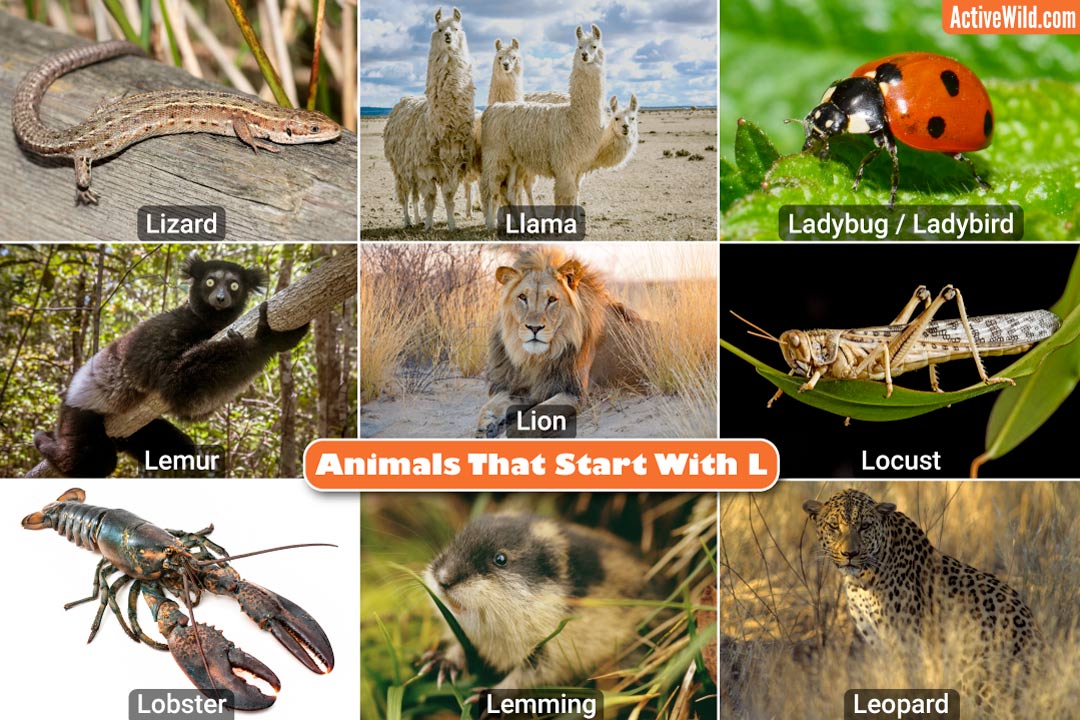

cool animals